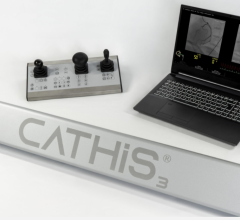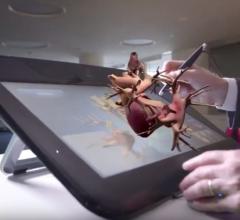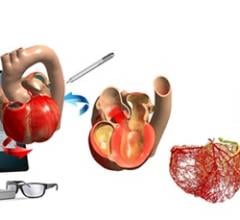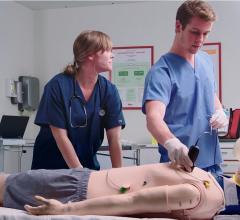October 23, 2013 — In a paper e-published in Catheterization and Cardiovascular Interventions, the Society for Cardiovascular Angiography and Interventions (SCAI) examined the current state of medical simulation in interventional cardiology and issued recommendations for expanding and standardizing the use of the lifelike training technology by practicing interventional cardiologists and fellows-in-training. The authors urged increased use and accessibility of simulation training, especially for highly complex procedures such as structural heart intervention and in areas where procedural volume is low.
Use of medical simulation as a training tool has grown over the past decade, largely because it helps physicians overcome training challenges shared by many medical professions, including physician work-hour restrictions and the pace at which technology is evolving.
“Interventional cardiology is particularly well-suited for simulation because the procedures are complex, learning curves can be steep, and complications can be life-threatening. While simulation cannot replace real patient experience, it provides a safe arena to develop and refine skills that improves overall patient care,” said Sandy Green, M.D., Fellow of the American College of Cardiologists (FSCAI), lead author of the paper and interventional cardiologist, Geisinger Medical Center in Danville, Pa.
The recommendations included:
- Developing standardized cases to include in simulation training programs that encompass the essential psychomotor and knowledge-based skill sets required of interventional cardiologists.
- Integrating standardized curriculum that meets current evidenced-based learning standards of the Accreditation Council for Graduate Medical Education (ACGME) and Core Cardiovascular Training Symposium (COCATs).
- Conducting large-scale studies to further evaluate the efficacy of using simulation training for learning new procedures and for maintaining competency of other procedures for both fellows and experienced clinicians.
- Integrating formal simulation programs into annual meetings and other training programs for fellows and practicing physicians.
“Simulation is a very helpful tool for physicians who work in an ever-changing technological and procedural environment, like interventional cardiology,” said John Messenger, M.D., FSCAI, associate professor of medicine, Division of Cardiology, University of Colorado, Denver and chair, Simulation Committee, SCAI. “Our hope is that these recommendations will encourage the expansion of simulation training programs for fellows and experienced clinicians alike, and as a result, enhance the quality of care we provide patients.”
To draw a valid assessment of the current state of medical simulation in interventional cardiology and help guide recommendations, the SCAI Simulation Committee surveyed 59 ACGME-accredited interventional cardiology programs, of which 14 reported using simulation as a teaching technique in their interventional cardiology fellowship courses.
The survey found:
- Most respondents agree simulators allow trainees to identify areas of improvement.
- Simulators are beneficial for learning low-volume procedures.
- Those surveyed thought simulators provide an objective assessment of technical competence.
- Participants expressed concern about the financial burden of using simulation and felt regional or central simulation centers could help ease this burden.
The authors found simulated procedures are most commonly used in endovascular procedures, while structural heart intervention holds the greatest potential for simulation-based training because of the lack of formalized training programs in the United States and the low procedure volume. Other simulated procedures, including coronary intervention, offer advanced simulation technology that challenge trainees with realistic clinical scenarios, such as heart attacks, multivessel coronary artery disease and chronic total occlusion.
For more information: www.scai.org


 March 11, 2022
March 11, 2022 




